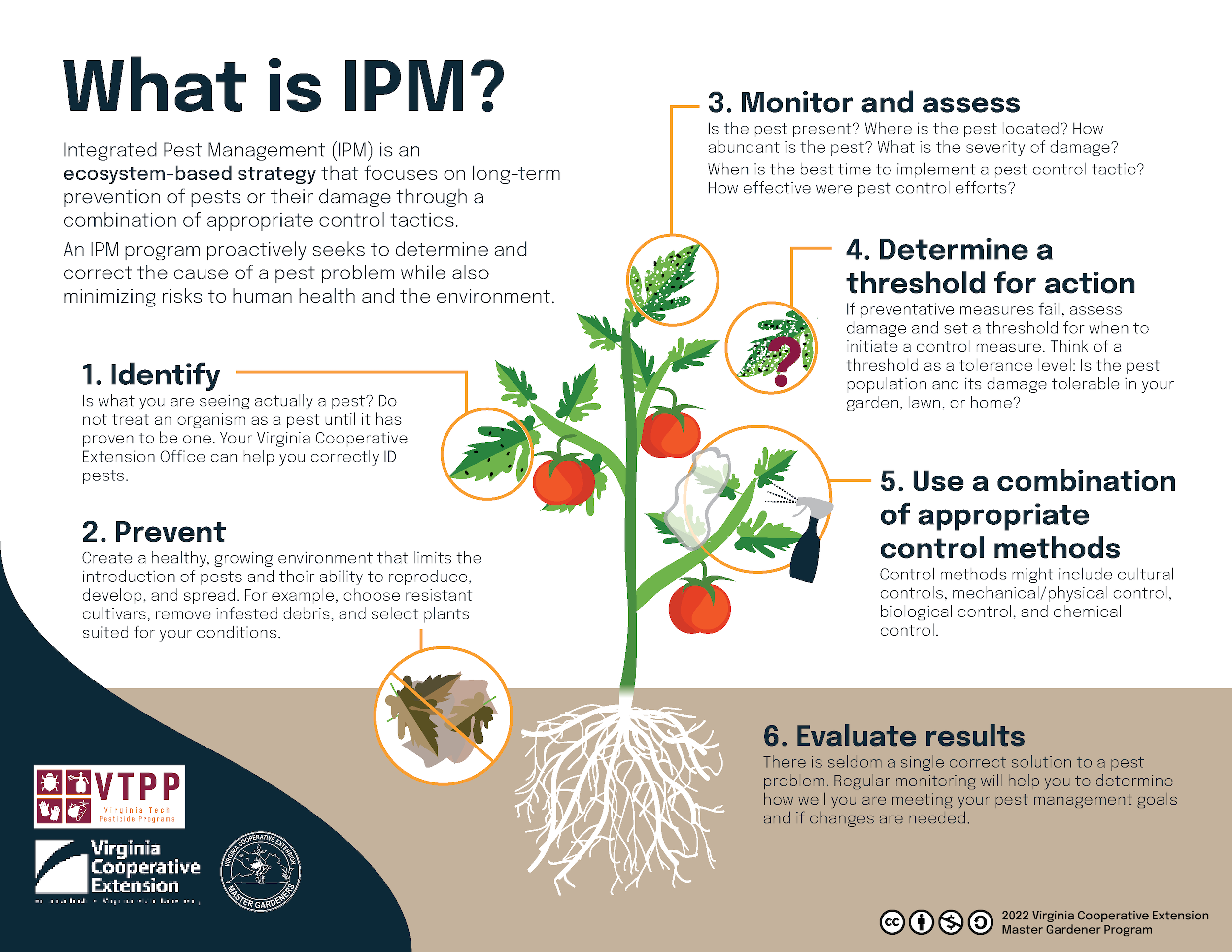The Of Pestwise
The Of Pestwise
Blog Article
The Best Guide To Pestwise
Table of ContentsOur Pestwise Diaries3 Easy Facts About Pestwise ShownPestwise Things To Know Before You Get ThisThe Buzz on PestwiseThe 9-Minute Rule for PestwisePestwise for DummiesThe 7-Second Trick For Pestwise

Q. Define "integrated pest monitoring" (IPM) and listing several feasible control strategies that might be utilized in an IPM strategy. A. Integrated pest management is the incorporating of ideal insect control tactics into a solitary plan to lower bugs and their damages to an acceptable level. Parasite control methods may consist of: host resistance, biological control, cultural control, mechanical control, hygiene, and chemical (pesticide) control.
Examine This Report about Pestwise
What can you do to keep the bugs you are trying to control from ending up being immune to the chemicals you use? A. Bug resistance can be lowered by using integrated bug monitoring and rotating the kinds of pesticides utilized.
Parasites are a critical risk to the farming service, and incorporated parasite management helps cultivators address and minimize these threats. Integrated parasite monitoring uses numerous approaches in facility, hence being a more effective service to the problem. Bug Exterminator. In certain, eliminating aggressive chemical methods allows for minimizing harm to people and the atmosphere by utilizing natural and safer alternatives rather
Unknown Facts About Pestwise
The objective of incorporated pest management is to decrease this damage and control acceptable problem levels instead of eradicate all undesirable populations. This is why it is essential to comprehend what actions are justified in each instance and use hostile ones only when other integrated administration techniques do not work. Integrated management mitigates the adverse consequences of a non-IPM strategy, and the primary benefits of IPM Benefits of IPM.
A proper understanding of the infestation extent establishes if the issue needs to be dealt with. are the following components of an IPM program since it is important to realize if the microorganisms make prospective dangers and pick the incorporated monitoring options or the certain chemical use. mean to minimize problems by applying different agronomic strategies.
Pestwise Fundamentals Explained
if avoidance was inadequate. Integrated monitoring alternatives in an IPM program start with much safer to extra hostile ones. For instance, target or program chemical spraying may follow manual removal or trapping that hasn't assisted. Those integrated management facets help comprehend exactly how to prepare and carry out an IPM program action by action: Display visit this site right here your crops on a regular basis.

To name a few, IPM cultural techniques consist of the following field management techniques: soil therapy; option of suitable plants; crop rotation; interplanting or strip chopping; selection of growing dates; weed control; usage of trap plants. Positive dirt conditions quicken plant growth, and energetic crops are a lot more immune to problems. Termite Treatment. In incorporated parasite monitoring, soil testing helps understand if the field is ideal for the manufacturing of this or that crop, and after that apply the doing not have nutrients to make certain plant healthy and balanced growth
The Ultimate Guide To Pestwise
No-till practices aid avoid dirt erosion, contributing to sustainable farming. Nonetheless, when tilling is required, it is advised to conduct it in the loss to reveal them to all-natural enemies and serious weather. Healthy and balanced plants and seeds determine successful crop growth, so it is essential to pick pest-free growing material with solid origins.
Thus, amongst other applications, crop rotation can be properly made use of as an integrated parasite management technique. Pests spread slower if rows of different crop kinds divide their host plants in intercropping or strip chopping, which is additionally made use of in the incorporated bug monitoring system. Alternatively, problems increase when plants of the same crop type or household expand together.
Likewise, potato beetles can hurt growing potatoes, as well as tomatoes. Planting catch plants in spots is one more choice for IPM intercropping. This incorporated bug administration method suggests bring in parasites to particular plants and afterwards regulating them with chemical or mechanical methods. Particularly, you can grow soybeans as trap crops for Japanese beetles.
The Ultimate Guide To Pestwise
Obstacles are case in points of physical IPM methods. Allow's take a closer consider them. Eliminating or picking pests out by hand is a time and labor-consuming option that is extensively applied in integrated administration and organic farming. Fully grown insects or their eggs and larvae are gathered by hand and damaged.

Department of Plant Sciences. This incorporated monitoring method implies an usual means of destroying pests by predators, parasitoids, pathogens, and other biological control agents (aka antagonistic microorganisms). The function of biological control in IPM is to.
Some Of Pestwise
With time, their populace transformed out to be a genuine annoyance to farmers together with indigenous kangaroos or dingoes. The cane toad is another instance highlighting integrated biological control failing hereof when it refused to search the target types and became a parasite itself. Parasitoids establish on or within their hosts to ultimately eliminate them after developing.
Report this page